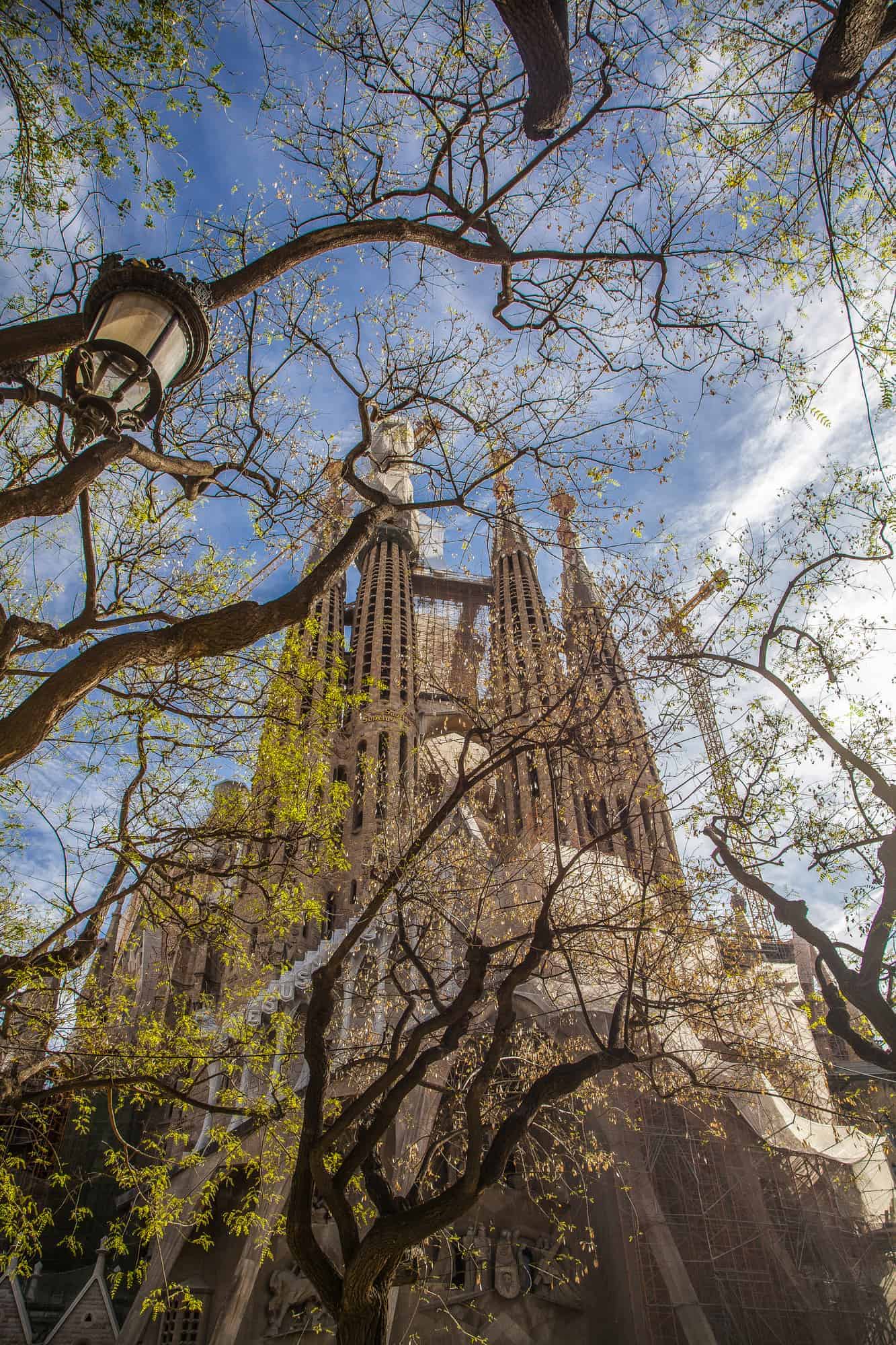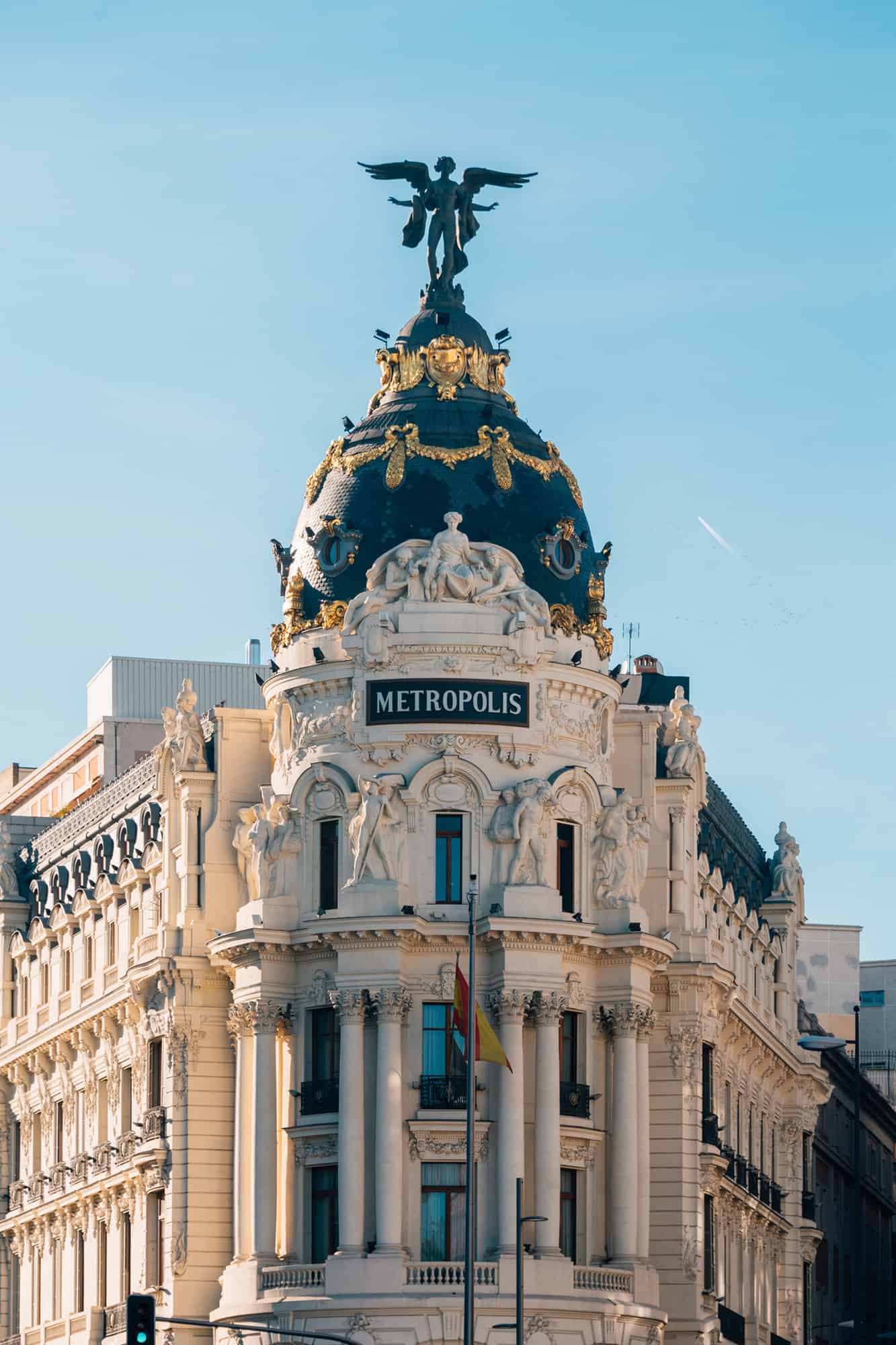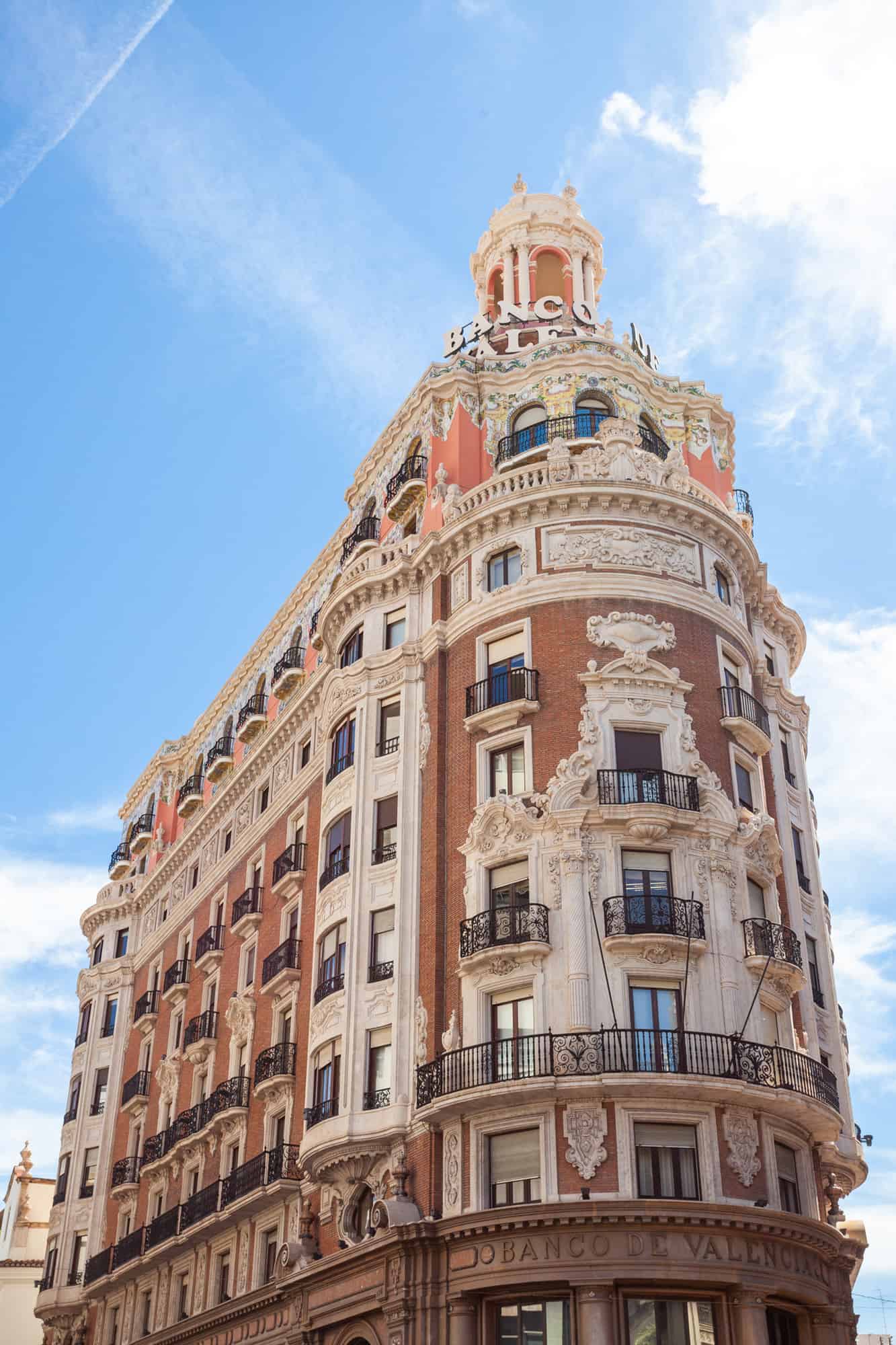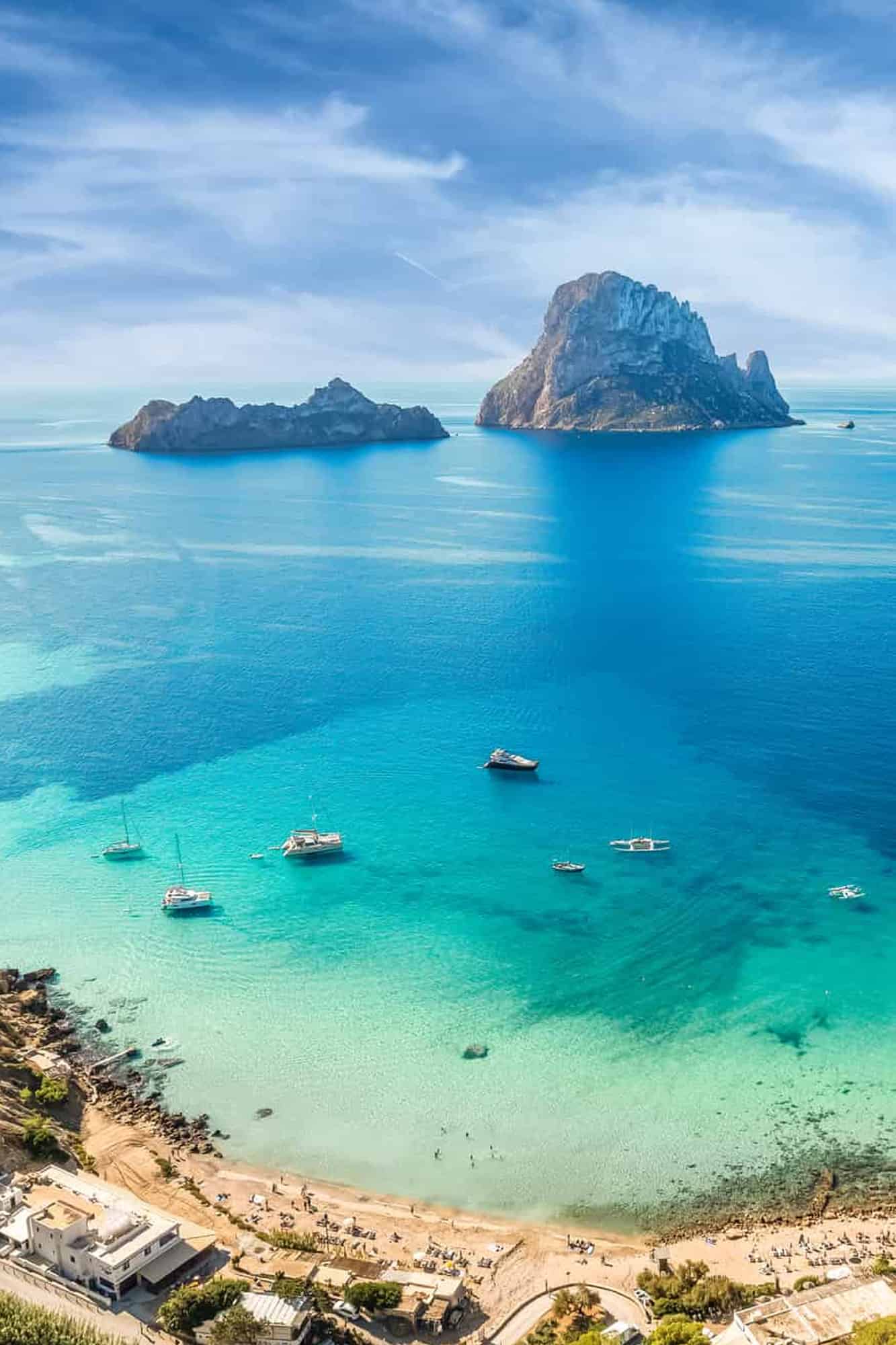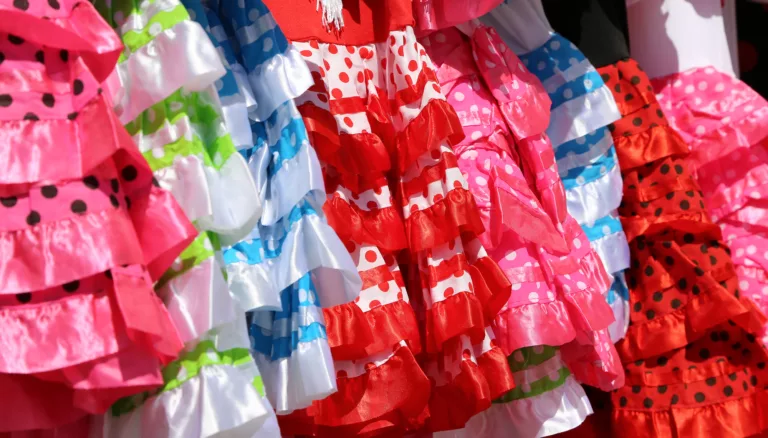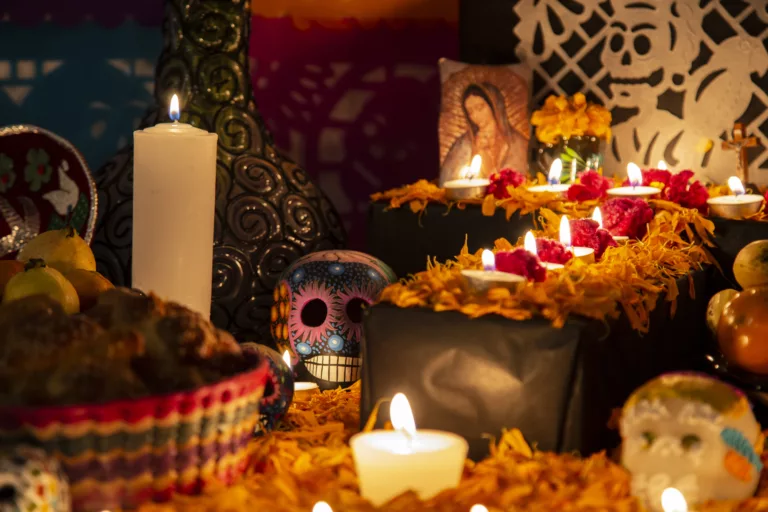Traditional Spanish Dances
Imagine traditional Spanish dances’ vibrant, colorful, and energetic atmosphere. They are a sensory symphony that engages the performers’ and audience’s eyes, ears, and emotions. Besides being visual feasts, these dances…

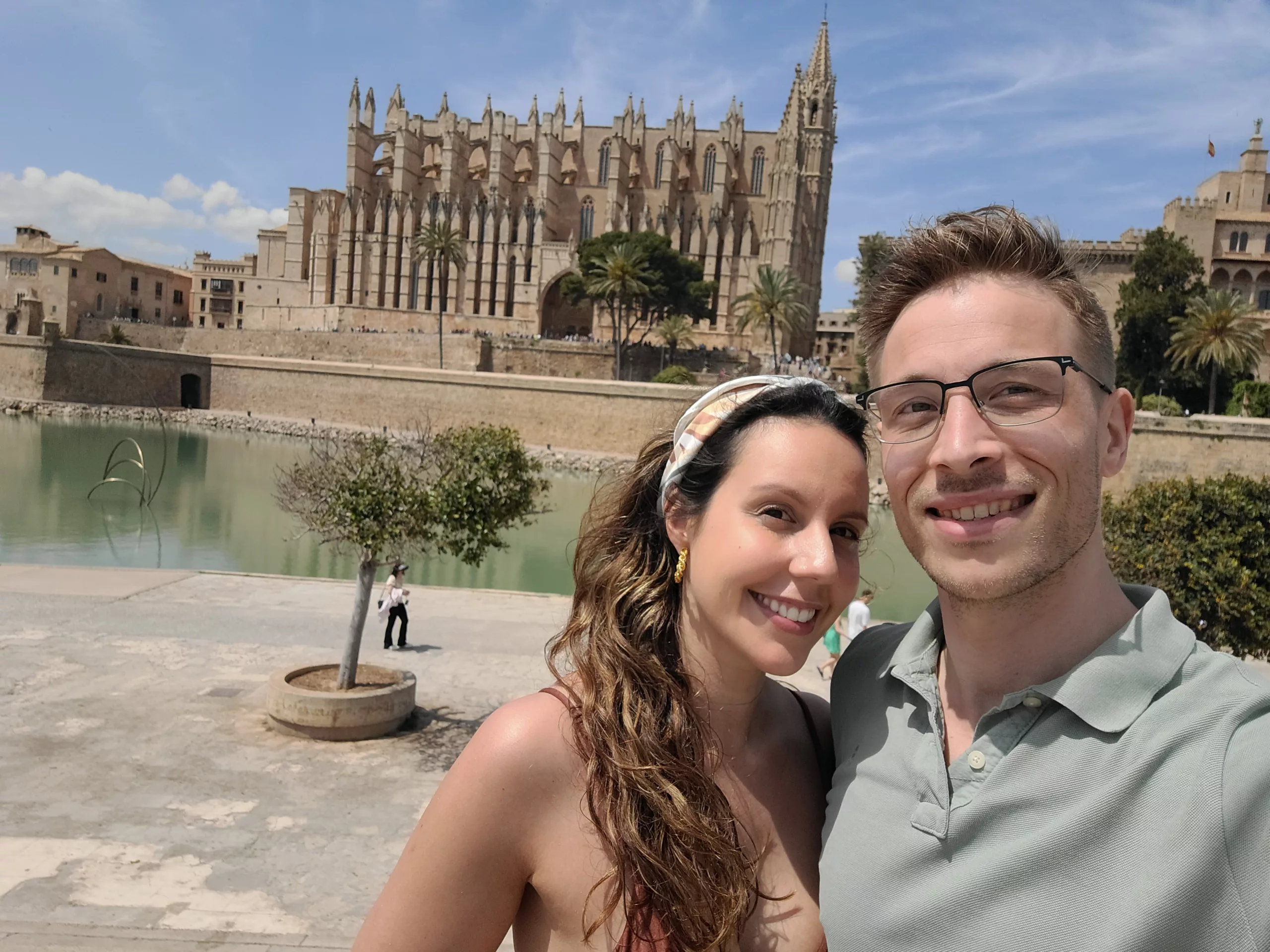
Hi, we’re Timon & Filipa!
We travel across Spain in our motorhome, Speedy, and update TravelSpain24 with fresh content, practical tips, and personal stories from the road. Our goal is to help you experience Spain beyond the typical tourist trails.
Imagine traditional Spanish dances’ vibrant, colorful, and energetic atmosphere. They are a sensory symphony that engages the performers’ and audience’s eyes, ears, and emotions.
Besides being visual feasts, these dances also represent the soul and heart of Spain. These dance forms are just as varied and enriching as Spain’s diversity. They are a perfect representation of all the enchanting art forms that Spain offers.
Let’s deep dive into Spanish dance traditions, exploring history, significance, and vibrant costumes. From the passionate Flamenco of Andalusia to the graceful Sardana of Catalonia, these dances embody Spain’s cultural wonders.
Top 15 Traditional Spanish Dances
1. Flamenco
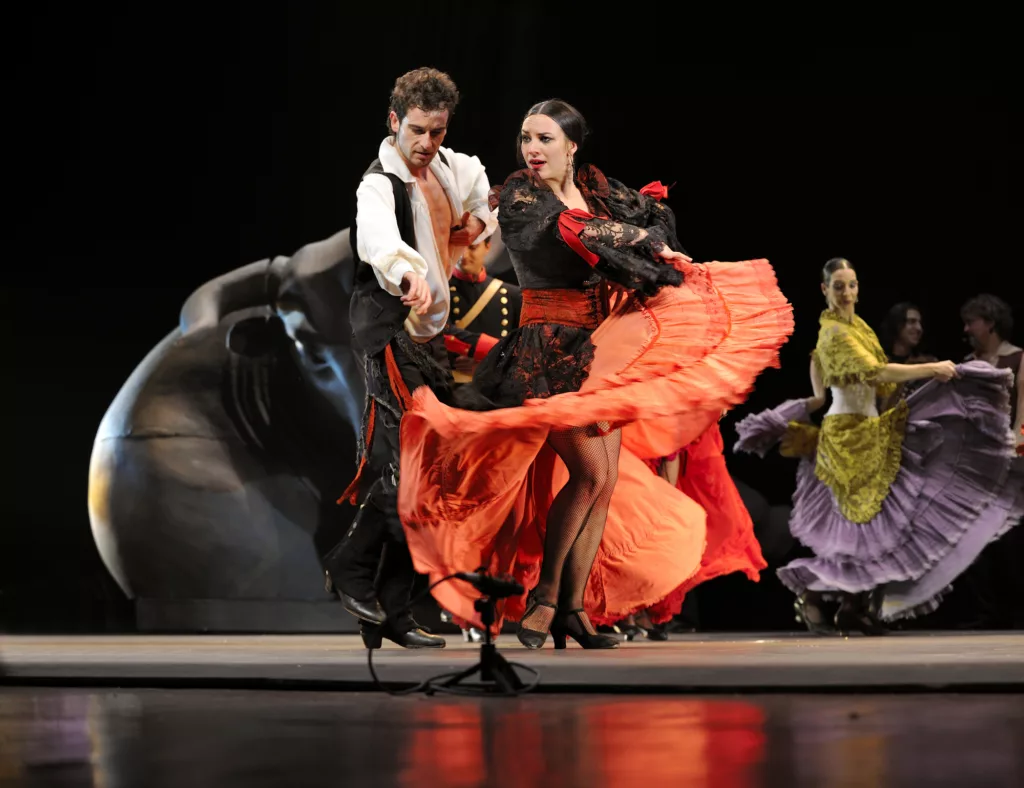
Flamenco is a Spanish folk dance based on the folkloric music traditions of the Gitano subculture of the region of Andalusia. It combines cultural influences, including Jewish, Moorish, Gypsy, and Spanish traditions. This fusion produces a blend of footwork, dramatic arm movements, and percussive clapping that convey intense emotions.
The Flamenco footwork is a conversation with the floor, where the dancer’s heel strikes the ground in a series of crisp and hypnotic thuds. Complementing the rhythmic tapping are the flicking wrists and curling fingers, which express intense emotions shifting from joy to sorrow, yearning, sensuality, and desire.
The percussive clapping, known as “palmas,” is the heartbeat of the music. It complements the melodic strains of the guitar and vocals. The dancer’s eyes become intense and smoldering to express the emotional themes further. With the arch to the back and the tilt of the head, the dancer evokes a sense of vulnerability and raw human emotion.
Flamenco shows across Madrid and other cities are a sight to behold when you want to enjoy the expressive art of dancing. It’s no wonder they continue to enchant audiences across the globe.
2. Sevillana
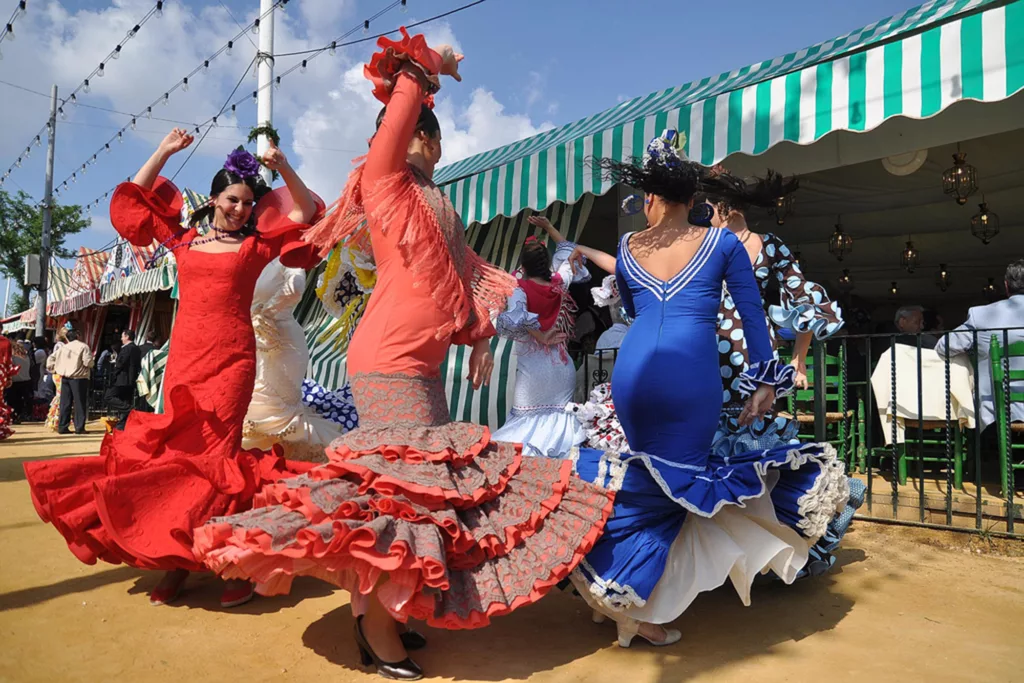
Sevillana is a folk dance from Seville, a southern Spanish city. It is considered a close cousin to the Flamenco dance. Where Flamenco is intense, the Sevillanas are lighter and more celebratory. It is also less physically demanding and less formal.
The Sevilliana features four distinct dance routines with joyful and lively dance movements. Dancers would gracefully move their arms to express joy, flirtation, and happiness. They wave, clap, and extend their arms in intricate patterns while portraying an air of elegance and lightness.
The dance features quick steps, heel taps, and toe touches, with dancers performing in pairs or groups of four. Like the Flamenco, percussive clapping (palmas) also adds to the cheerful rhythm of the dance. It would shift from delicate finger snaps to vigorous hand claps to create a delightful sensory experience.
Sevillianas are popularly danced at celebrations such as the annual Seville Fair (Feria de Abril) and other regional festivals throughout Andalusia. During these celebrations, men and women of all ages would put on their traditional attire and take to the streets to dance.
3. Sardana
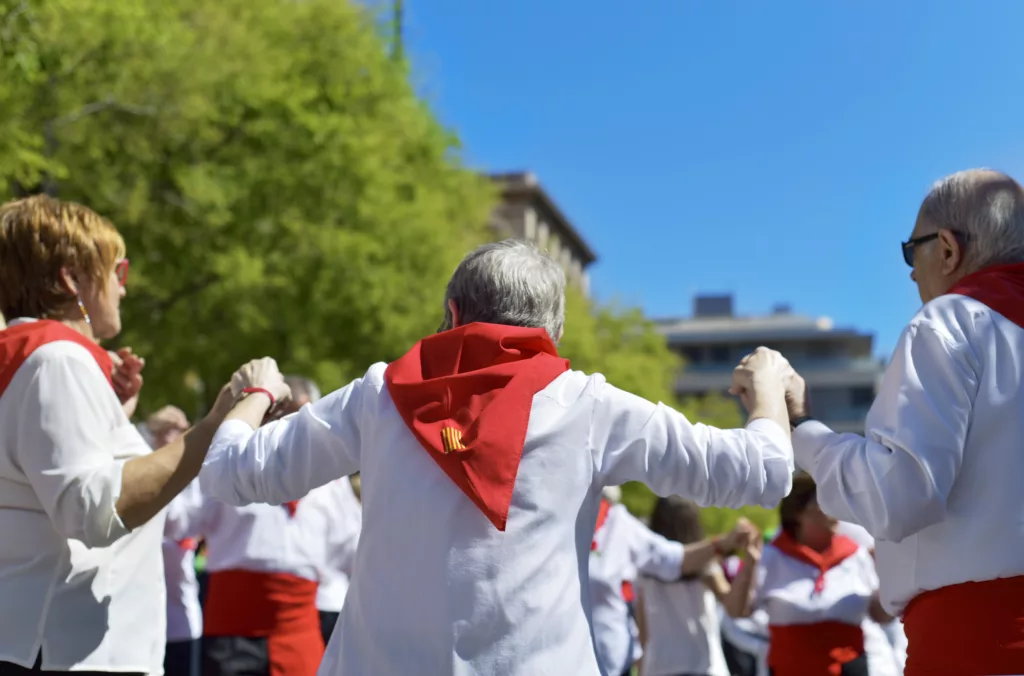
Sardana, also called the Catalan circle dance, is a traditional dance from the Catalan regions of Rosello, Empordà, and Garrotxa. Dating back to the 16th century, this dance showcases the Catalan people’s unity, pride, and solidarity. The Sardana also symbolizes cultural resilience and unity during political oppression and adversity.
Couples or alternating men and women perform this dance while holding hands in a large circle. They move counter-clockwise with precise and elegant steps forward and backward. Thus, the circle contracts and expands in mesmerizing patterns.
While the dancers sway, the cobla, a traditional Catalan band, accompanies them. The cobla consists of a flaboi (a small flute) and a tambori (a small drum), building a lively and joyful atmosphere together. Paid with clapping hands and steppings, the Sardana is truly beautiful.
Often, the Sardana is performed at Catalan festivals. One such place to enjoy the Sardana dance is Catalonia National Day (Diada), one of the prime reasons why Barcelona is a place you should visit in September.
4. Muiñeira
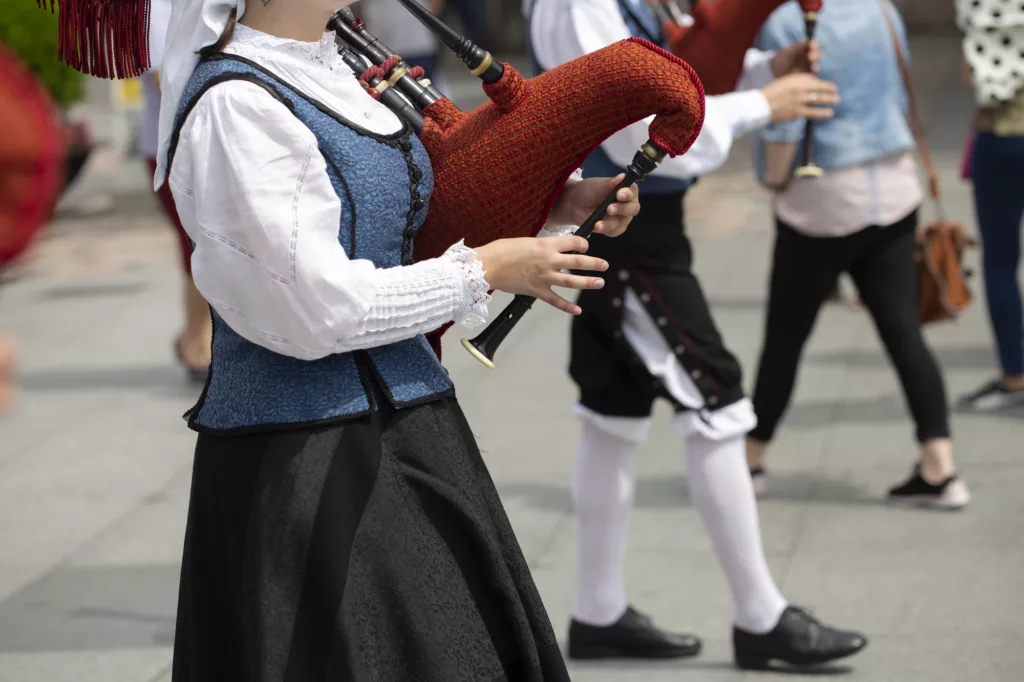
The Muinera dance traces back to the Celtic traditions of Galicia. Celtic migrations to the Iberian Peninsula also influenced this dance. The Muinera dance features spirited and rapid footwork with intricate steps and lively turns. Dancers would let their feet stamp, tap, and shuffle on the ground to create a dynamic percussive sound.
The term Muinera is derived from the Galician word “muino” meaning “mill.” So the dance incorporates arm and hand movements that mimic the motion of a waterwheel or grinding at a mill, creating a circular flow of energy. The accompanying traditional Galician music flows from the bagpipe, or ”gaita.” The bagpipe produces both spirited and haunting melodies alongside other instruments like flutes and drums to build a soundscape that resonates with Galician culture.
5. Paso Doble
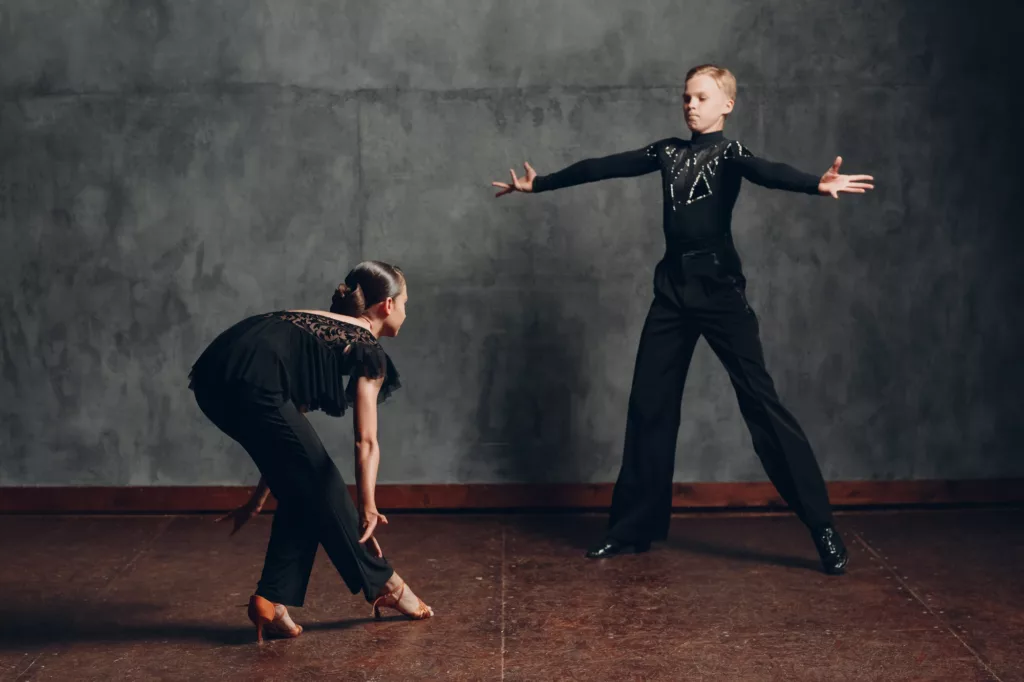
The word Paso Doble means “double step.” The Paso Doble pays tribute to the bravery of the matador and the spectacle of Spanish bullfighting. It is a fast-paced, energetic dance with staccato steps that mimic the rhythmical movement of a matador (bullfighter) in the bullring. Hence, it incorporates elements such as dramatic poses and capes, with dancers stomping, tapping, and gliding across the floor.
The accompanying music is also dramatic and powerful, with marching drums, castanets, and trumpets. The Spanish infantry equally used the Paso Doble to set the speed of marches alongside 18th-century comedies. Despite its brave beginnings, it began gaining popularity as a ballroom dance in the early 20th century. It is one of the many standard dances in international ballroom competitions today. Others include the slow waltz, slow foxtrot, tango, Viennese waltz, and quickstep.
Throughout Spain, there are many places to enjoy this traditional Spanish dance. Find more fascinating places to watch the Paso Doble dance performance on a Toleday day trip from Madrid.
6. Bolero
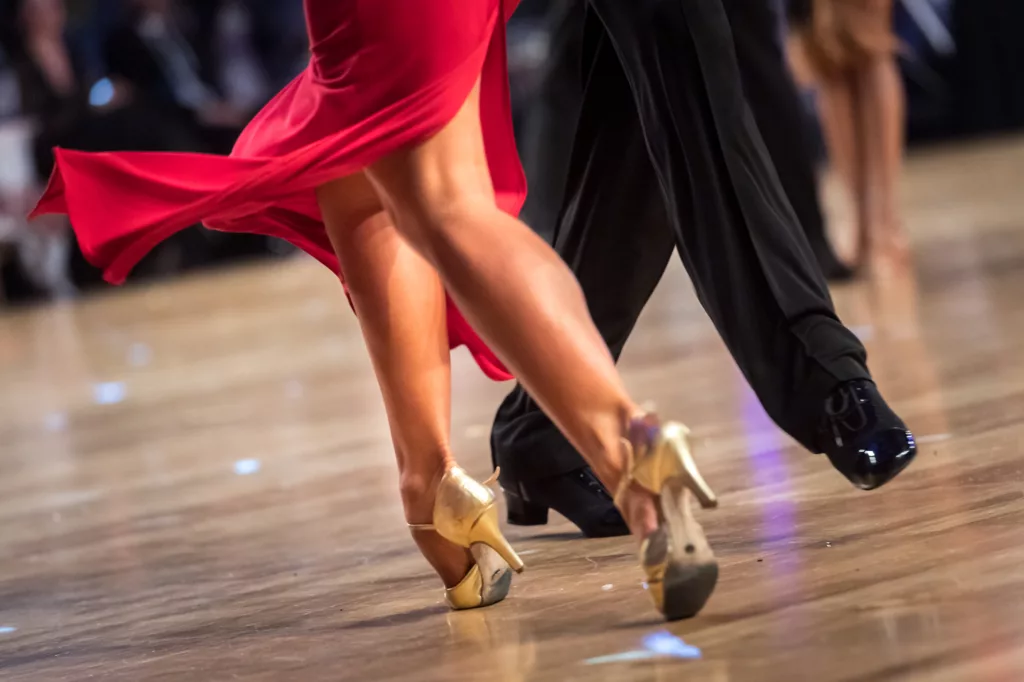
The Bolero dance offers a timeless expression of love and longing through its sensual, smooth, and graceful sweeping movements. Dancers grace the floor with their fluid motions and close, intimate contact with one another. You can feel the chemistry between dance partners as they maintain eye contact and move even closer. A soloist or couple typically performs the Bolero.
Guitar music and castanets accompany this moderately-paced dance form. You would fall in love with how they convey a sense of yearning, anticipation, desire, and longing. Many researchers claim it originated in Cuba and was brought to Spain when Cuban migrants arrived. Even so, the Bolero has a rich and varied history, adapting and evolving in different countries and contexts.
7. Fandango
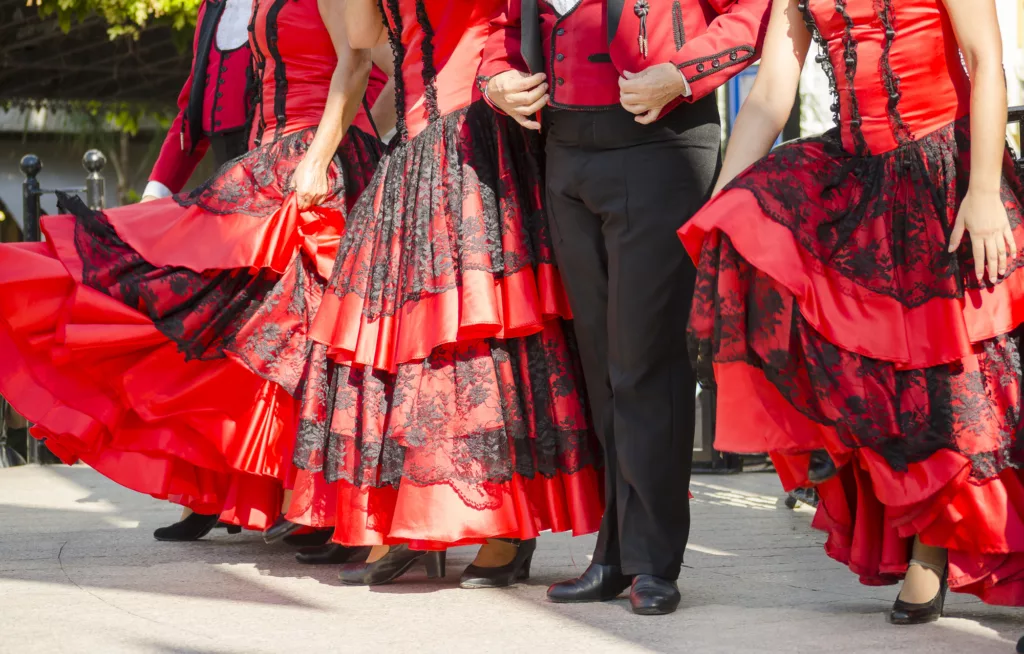
The Fandango is a well-known variety of flamenco. It is also a popular dance from the region of Andalusia, southern Spain. It is a fast-paced, passionate Spanish dance with similarities to the Bolero. That said, the Fandango combines energetic steps and melodious guitar sounds. This dance is performed by couples.
The heart of this dance is the melody from the Spanish guitar. The guitarist demonstrates exceptional skills through the fast fingerpicking needed to produce complex and captivating music.
Dancers perform intricate stomps, heel taps, and steps that rhyme with the guitar sounds to build an electrifying atmosphere. The castanets also add to the vibrant dance and melodies. Like other traditional Spanish dances, there’s also hand clapping and wide expressive hand movements. Altogether, the energy and emotions create an atmosphere of joy, longing, and love.
The Fandango has many regional variations ranging from Andalusia’s lively and playful themes to Murcia’s faster tempo melodies with the distinct sounds of the tambourines. That said, Malaga is the birthplace of the fandango and is famous for its own version, the Malaguenas, often accompanied by a guitar and no dancing.
You can witness this dance performance at the Torre del Cante Flamenco Festival, one of the best times to visit Malaga. Others include the Noche Flamenca, the Cante Grande Festival, or even flamenco shows by international artists at Cervantes Theater in Malaga in October. Whether a local fiesta in a small Andalusian town or participating in a national celebration, the Fandango is an infectious dance that will make you fall deeper in love with Spain’s rich cultural tapestry.
8. Zambra
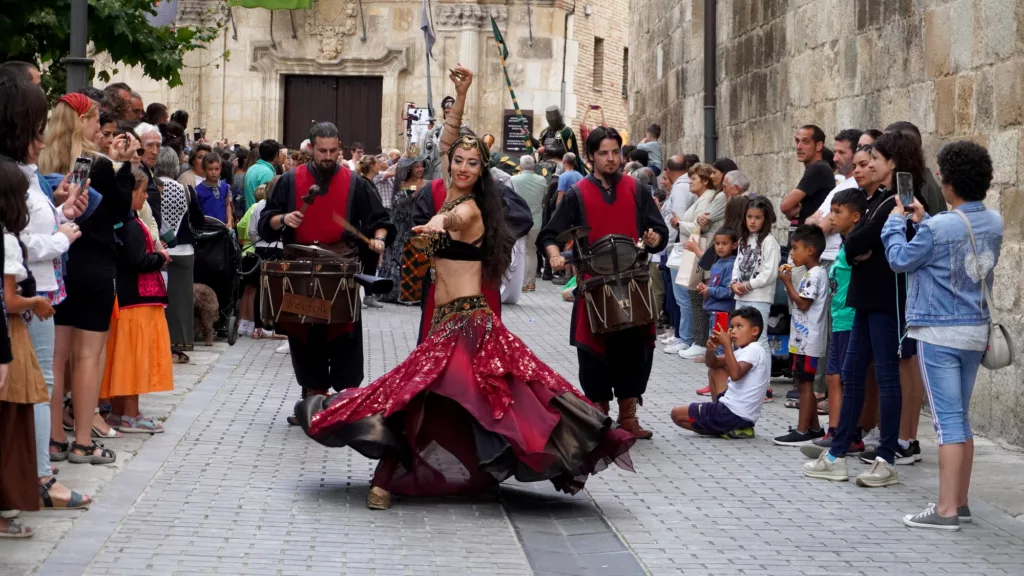
The Zambra is a captivating dance tracing back to the Moorish period in Spain, specifically the region of Granada. The word “Zambra” is of Moorish origin, with its Arabic root word “zamra” meaning party or festivity.
The Zambra is similar to the Flamenco through its expressive footwork, emotional storytelling, and passionate performances. Like the Flamenco, it also uses handclaps, complicated steps, and castanets. But what sets it apart is its distinct Oriental origins, characterized by sensual body movements.
When performing the Zambra, dancers would sway their bodies to mimic oriental dance. This means flowing arm movements, graceful hand gestures, and serpentine-like body motions.
Originally, the Zambra dance was performed in caves and courtyards, especially in the Albayzin neighborhood of Granada. Over time, it has become a significant part of Andalusian culture. Today, you can experience the Zambra at the annual Festival de la Zambra, one of the best times to visit Granada.
9. Jota
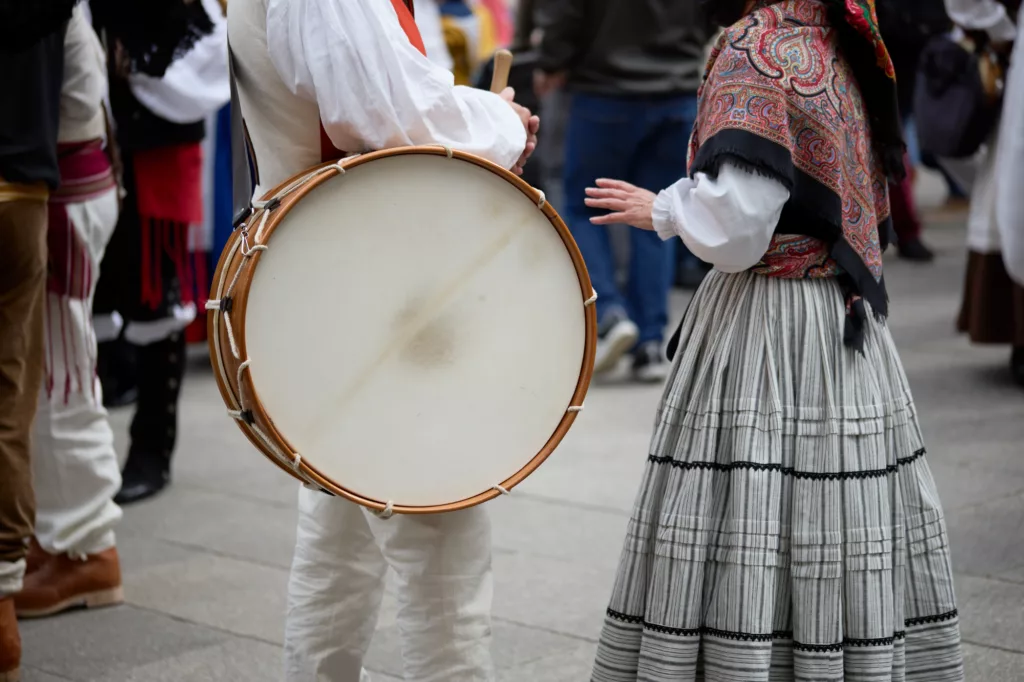
The Jota originates from Aragon, a region in northwestern Spain. Originally from across the Aroganose countryside, the Jota was the dance of courtship and celebration. Over time, it has evolved into a symbol of Aragonese culture and is performed across various regional festivals today.
The Jota is a romantic Spanish folk dance where couples express their desire and affection through playful movements. Dancers would swirl against each other while exchanging flirtatious glances, gestures, and smiles. That said, the hallmark of this dance is its foot movement.
Dancers present a visual and auditory delight by using rapid and precise heel clicks, toe taps, and rapid turns. Accompanying this dance are traditional songs that narrate love stories, local legends, and historical events. The lyrics of these compositions are usually heartfelt and melodious.
Many Jota performances also feature castanets. Paired together with the footwork, arm movements, and lyrics, these vibrant elements create an atmosphere of romance, love, and happiness.
10. Canary Dance
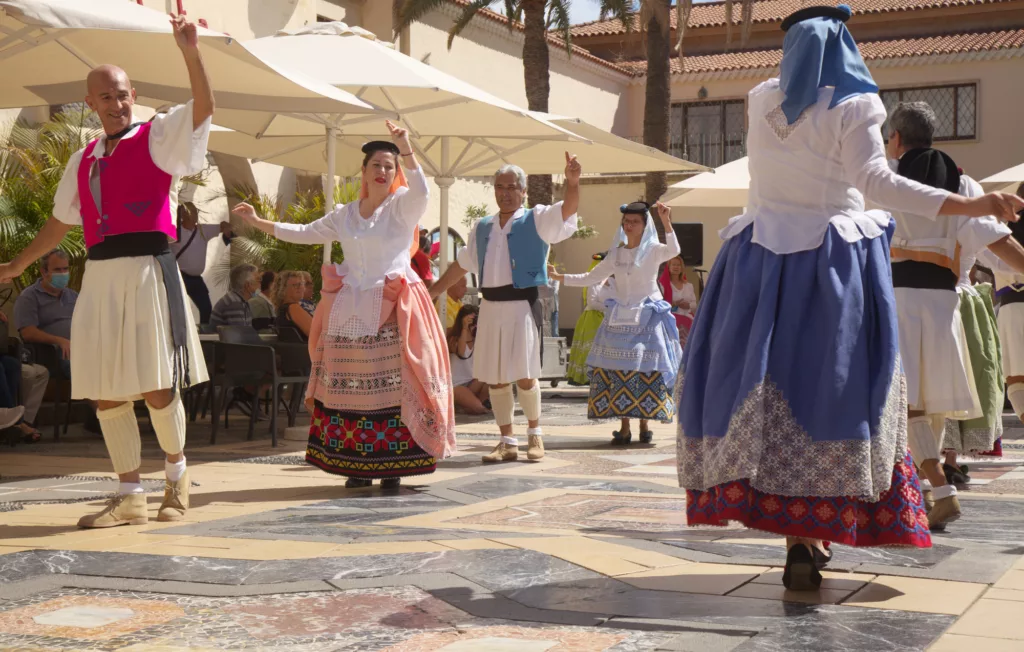
The Canary dance is also called “Baile Canario” or “Folia”. It is an elegant and gentle dance from the Canary Islands, an archipelago located off the northwest coast of Africa. These gentle and expressive movements reflect the natural tranquility of the islands. Imagine the calm and fluid ocean waves—this is expressed in the Canary Dance.
Every expressive hand movement with fingers and palms creates delicate patterns that convey emotion and storytelling. The canary dance has two core parts: the introduction and the main aspect. The introduction features a series of steps with hands and feet while singing.
In turn, the main dance is a serene movement emulating the gentle sway of palm trees in the island breeze. The footwork is also delicate and precise. Dancers glide and step lightly across the floor, moving their bodies to the tranquil music. There are also props like castanets accompanied by traditional drums and guitars to convey an unforgettable experience.
To enjoy the Canary dance, consider attending the Festival of Hearts at Tenerife, a long-standing explosive celebration and an ideal reason to visit Tenerife.
11. Zarzuela
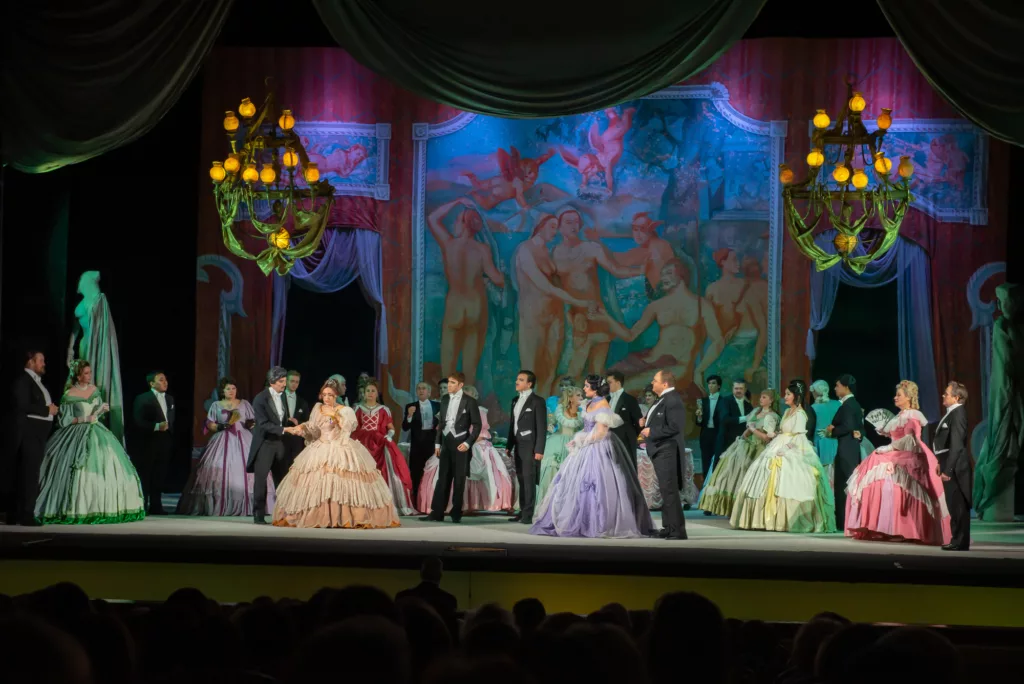
Zarzuela dance is Spain’s theatrical dance form, often with a dramatic storyline. Dancers would often wear costumes featuring the time set for the “zarzuela.” And as performers sing, their voices fill the air with melodies while their bodies complement vocal storytelling.
The dance would also change across phases to add more layers to the story’s characters and plot.
You will especially love the expressive gestures, with dancers using their arms and hands alongside hand fans, mantillas (lace shawls), and other props to intensify the dramatic flair of the performance.
Zarzuela stands out from other dances because of its dynamic movements. One minute, you immerse in the passionate flamenco-inspired footwork. And the next, the graceful waltz, captures your attention. Paired with the chemistry between dancers, the Zarzuela dance engages your emotions. It allows you to deeply connect with the character’s desires, stories, and conflicts.
12. Chotis
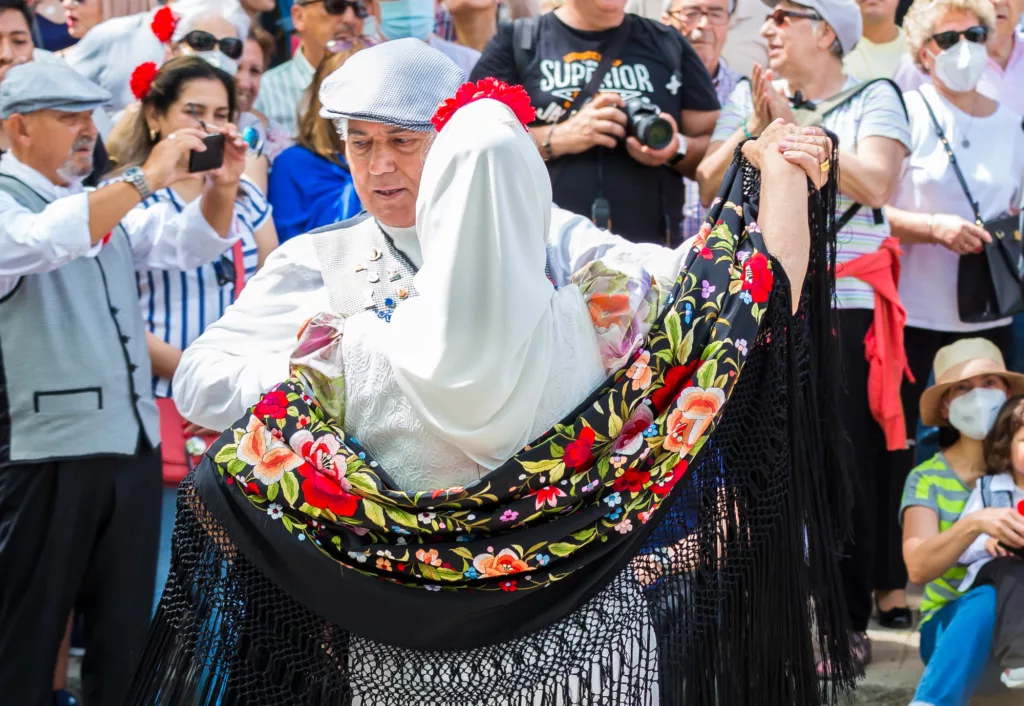
Chotis is the traditional dance of Madrid. It was said to have originated in Scotland and made its way to Madrid in the 19th century. It has found its way into working-class neighborhoods like Malasana and Lavapies. One thing that sets Chotis apart from other dance steps is the series of unique steps you won’t find anywhere.
The most distinctive aspect of this dance is the graceful and playful movement where dancers skip forward and backward in a waltz-like manner.
The Chotis dance also features spins and twirls to convey a lively, joyful, and welcoming ambiance. Consider watching this fascinating dance at the San Isidro Festival, a popular feast celebrated in mid-May and one of the best times to visit Madrid.
You will be stunned by how friends and families embark on a pilgrimage to the Hermitage of San Isidro, where they dance the Chotis in their traditional costumes at open-air street concerts where they party until nighttime.
13. El Vito

El Vito is a passionate and expressive Andalusian folk dance. It is known for its infectious rhythm and evocative storytelling. El Vito is believed to have originated from Roma (Gypsy) and Moorish cultures. However, it has evolved into a fusion of many cultural elements.
El Vito features fiery and dramatic expressions where performers use their entire bodies to convey longing, desire, and romantic tension. The lively guitar music and El Vito’s melodious claps also compel the dancer and spectator to move to the rhythm. Also adding more layers are the handclaps and syncopated steps. All that whirling and spinning alongside the taps and leg movements creates a whirlwind of deeply mesmerizing motion. The strumming of Spanish guitars also accompanies this.
El Vito has been performed in theaters and urban areas since the 19th century. Later, it was incorporated into the Spanish ballet. And today, you can enjoy the dance form across Spain’s hottest destinations in theaters and festivals.
14. Matachines
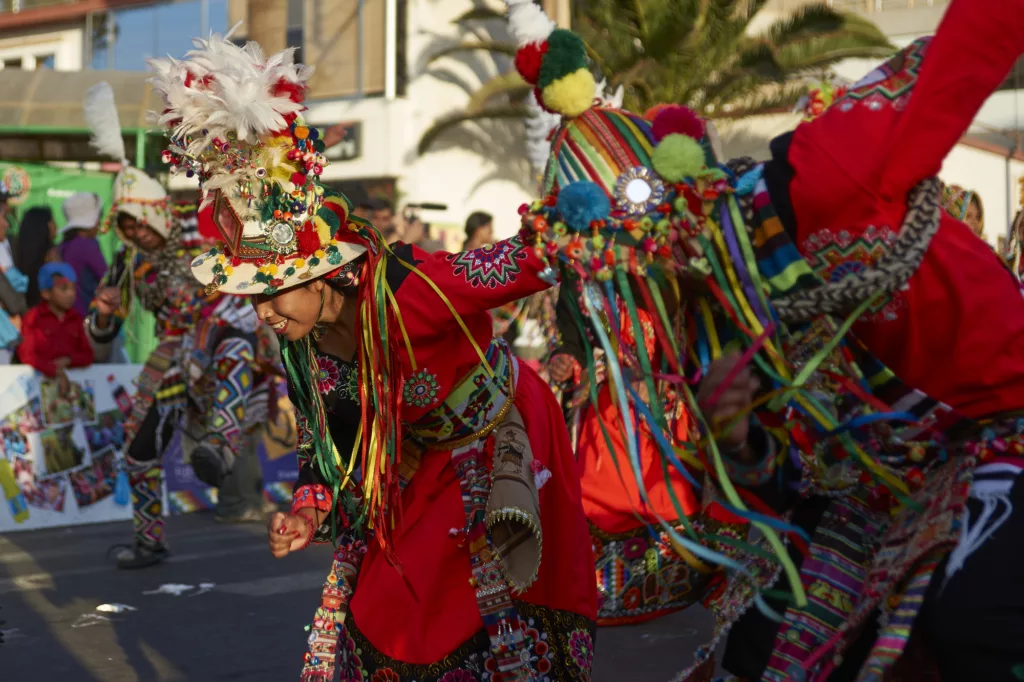
Matachines is a sensory feast of color, rhythm, and ritualistic dance that pays homage to patron saints. This dance blends Indigenous cultures with Spanish and Moorish influences.
During the performance, dancers would perform precise footwork and synchronized steps as though they were connected with the earth and spirit. Hence, this dance is often used as a form of worship and reverence for patron saints and spiritual entities.
It also often narrates struggles between good and evil, with dancers taking on different character roles.
Perhaps the most spectacular aspect of this dance is their vibrant costumes. You will love the bold apparel with its enchanting colors and complex patterns. The adornments also stand out, ranging from bells to ribbons and feathers.
This costume reflects the cultural heritage of the performers and their connections to the land, ancestors, and spirits that they honor.
These decorative motifs and ornate embellishments also echo the complex tilework, arches, and mosaics in Moorish architecture across Spain.
15. Aragonaise
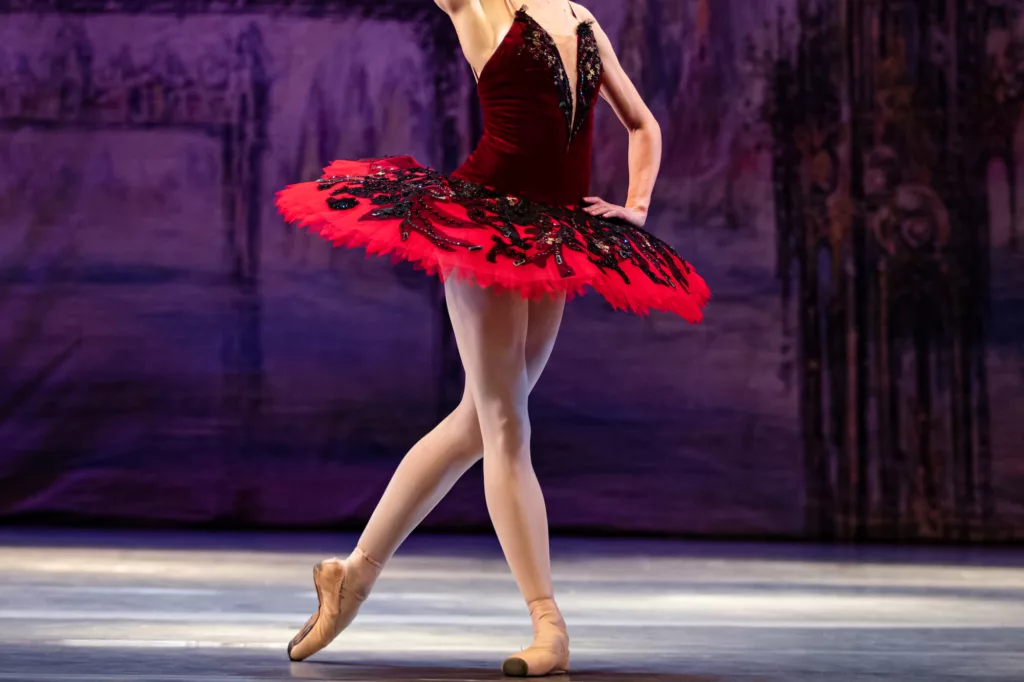
Aragonaise is a graceful dance originating from Aragon, one of the coldest places in Spain. The Aragonaise dance has a rich history dating back to the 19th century in the Aragon region of Spain.
During the performance, dancers will sway in smooth-flowing movement while maintaining a level of sophistication. They would glide across the dance floor while gently interacting with their patterns to create an essence of romance.
Aragonaise is traditionally accompanied by melodic and rhythmic music. The music blends castanets, violins, and guitars to create a charming and elegant ambiance. Originally, it was a folk dance, but it became a refined fanfare suitable for the royal courts. By the 19th century, it had become popular in ballet and opera.
Today, Aragonaise is performed across diverse settings in dance recitals, cultural festivals, and other performances.
History of Traditional Spanish Dances
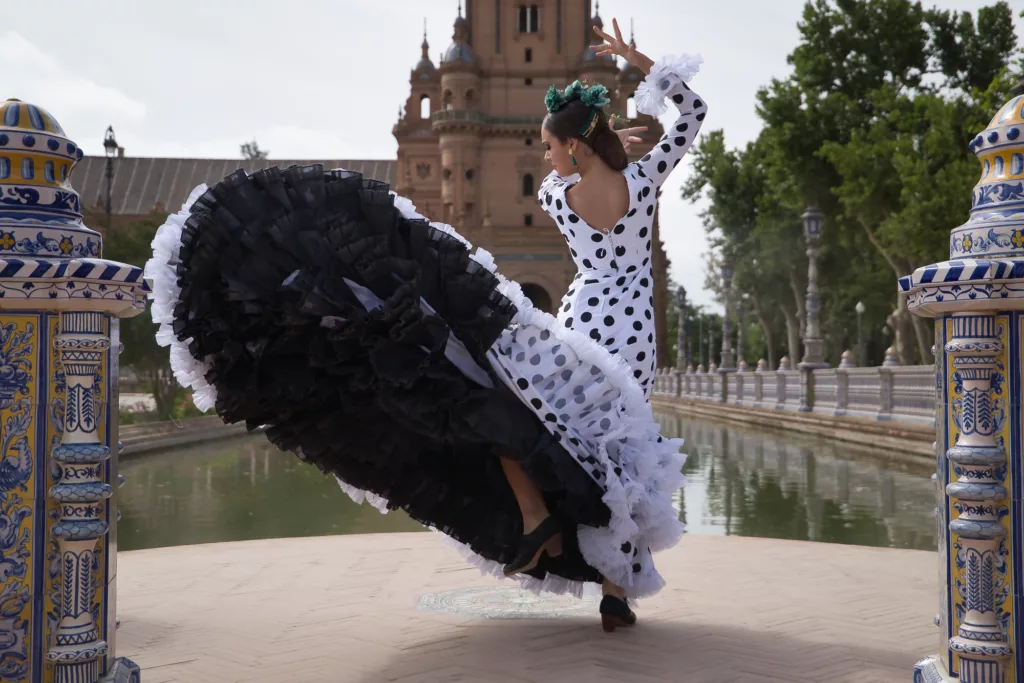
Spanish dances combine elements from Jewish, Arab, and Gypsy cultures. The Moors, who occupied Spain from the 8th to the 15th centuries, left their mark. This is evident in the complex hand and foot movements of the Spanish dance. The Gypsies, known as Gitanos in Spain, also add emotional expressions and a unique improvisational style.
That said, every region in Spain has its own unique dance traditions infused with local culture and history.
So, together with Moors and Gypsy influences, a unique choreography is performed across Spain. This varied cultural history gave rise to over 200 traditional and unique Spanish dances.
But not many are witnessed today. Yet, every dance form is not just a performance but a history lesson. From the gorgeous costumes to the props, which often reflect the traditional clothing in Spain, musical instruments, and body movements. By the 20th century, the Francisco Franco dictatorship threatened the traditional dances of Spain. At the time, he banned regional dances and music for over 35 years. This, among other factors, has caused the loss of many Spanish dance forms. That said, many of the biggest have been preserved to date. These delightful dance forms connect, nurture, and define the enriching heritage that defines Spain’s diversity.
Traditional Spanish Dance Costumes
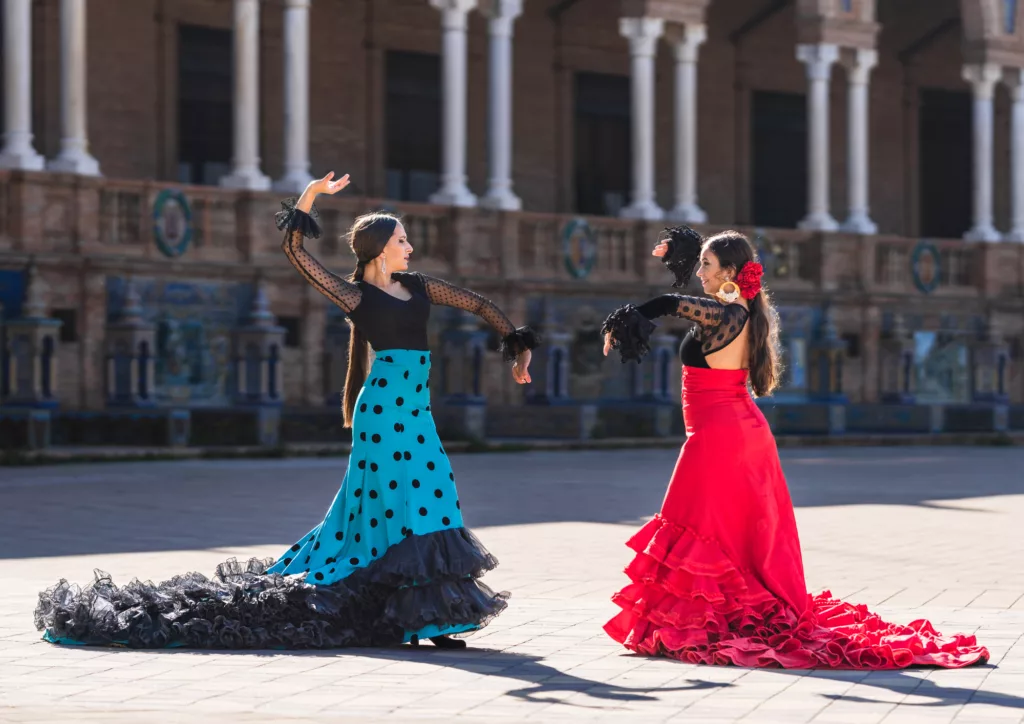
Spanish dance costumes are vibrant and colorful. They feature large, enchanting yellow, red, orange, and deep blue hues. These colors convey a sense of energy and passion, which you already witness displayed in the many traditional Spanish dances. The costumes also have intricate embroidery and detailing of elaborate patterns, sequins, and floral motifs. Together, they create visually stunning and texturally rich garments.
Like the dances, the Spanish dance costumes also vary significantly across regions. Places like Andalusia, Catalonia, and Aragon have some of the most distinct cultural Spanish costumes. For example, the Aragonaise costumes from Aragon are more elegant and flowing, while Flamenco’s have ruffled sleeves. These costume variations serve as symbols, thereby expressing each region’s unique heritage and traditions.
Besides their cultural meanings, Spanish dance costumes also have ties to religious festivities. That said, these costumes have evolved. For instance, the Flamenco costumes in the 19th century were more elaborate and theatrical, featuring long trains and mantillas. Modern Spanish dance costumes, however, still have many traditional elements but blend contemporary fashion emblems as well. The fusion offers room for creative freedom while maintaining cultural authenticity.
Traditional Spanish Dances Today
Regardless of their history, Spanish dances have evolved. But this evolution is done carefully to maintain a balance of preservation and adaptation. Traditional dance forms like Jota, Sevillanas, and Flamenco hold on to their cultural authenticity, and many evolve along the borders of costume embellishments. Most of this preservation is passed down through dance schools and academies.
Families and communities as young dancers learn from their elders, further fostering a sense of unity. Beyond Spain, Spanish dances are also setting the stage globally. The captivating performances and passionate storytelling have brought Spanish dances to international stages, festivals, and competitions, thereby contributing to the global appreciation of performance art.
Spanish dances are also celebrated at numerous festivals in Spain and around the world. They make hot destinations as dance enthusiasts and tourists and attend these festivals to immerse themselves in the rich culture of Spanish dance. These festivals also provide platforms for the younger generation to learn and enjoy the sensory extravaganza that the Spanish dances represent. Overall, traditional Spanish dances are a sight to behold. All that bold collection, complicated dance steps, and expressive movements make an irresistible show you wouldn’t want to miss.
Search the site
Popular Destinations
Just letting you know
When you buy something through our links, we’ll earn a small commission—don’t worry, it won’t cost you any extra! It’s a win-win, right?
Exclusive Heymondo Travel Insurance Offer
Planning a trip? Make sure you’re covered! We’ve teamed up with Heymondo to give our readers a special deal: 5% off travel insurance. Grab this deal and know you’re looked after on your next trip.

